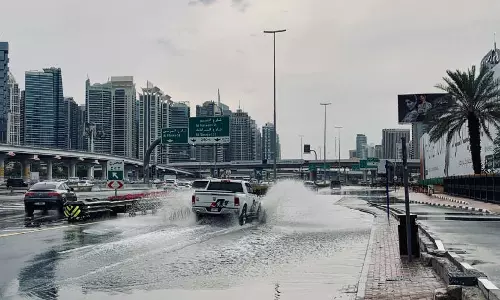
Severe storm occurrences caused floods, says CWC
text_fieldsA study by the Central Water Commission (CWC), New Delhi, has concluded that the flood in Kerala was due to severe storm occurrences and the release from reservoirs had only a minor role in flood augmentation.
The report, which was prepared by the Hydrology (South) Directorate, Hydrological Studies Organisation of the CWC, stated that the flood was due to severe storm occurrences during August 8 to 9 and 15 to 17.
“The storm of August 15 to 17 resulted in heavy flooding in Periyar, Pampa, Chalakudy and Bharatapuzha sub-basins of Kerala. The rainfall during August 15 to 17 was almost comparable to the historical July 16 to 18, 1924 rainfall of Kerala, particularly in the Periyar, Pampa, Chalakudy and Bharatapuzha sub-basins,” according to the report released on Monday.
N.N. Rai, CWC’s Director, Hydrology (South), said that the report had been submitted before the Union and Kerala governments.
The report had found that the Idukki reservoir absorbed a flood volume of about 60 MCM (million cubic meters) during August 15 to 17. Even, with the 75% filled reservoir conditions, the current flood could have not been mitigated as one day rainfall in majority of the area was more than 200 mm and severe rainfall continued for 3 to 4 days.
The released volume from the reservoirs was almost similar to inflow volumes, it said.
The Commission found that the absence of appreciable storage reservoirs in the upstream of Pampa, Manimala, Meenachil and Achenkovil rivers along with the shrinkage of carrying capacity of Vembanad Lake and reduction in the capacity of Thottappally spillway worsened the flooding in the Kuttanad region.
The study findings revealed that the dams in Kerala neither added to the flood nor helped in reduction of flood, as most of the dams were already at the full reservoir level or very close to it on August 14 due to more than normal rainfall in the months of June to July.
The study has recommended review of the rule curves of all reservoirs in Kerala. “The rule curves need to be formulated for both conservation as well operations during the flood, particularly for the reservoirs having the live storage capacity of more than 200 MCM in order to create some dynamic flood cushion for moderating the floods of lower return periods particularly in the early period of monsoon,” it said.
For efficient discharge of flood runoff from Vembanad Lake, the approach channels to Thottappally spillway and the passage of the Thaneermukkom barrage should be widened taking into considerations the lake hydrology, ecology, saline water intrusion etc based on scientific and engineering inputs.
The Commission has suggested that Kerala should explore the possibilities of creating suitable storage reservoirs, wherever feasible, for flood moderation and other multi-purpose uses in basins like the Periyar, Pampa and Achenkovil. The Poringalkuthu dam should be inspected by the Dam Safety Review Panel (DSRP) and the design flood, spillway capacity of the dam must be reviewed.






















